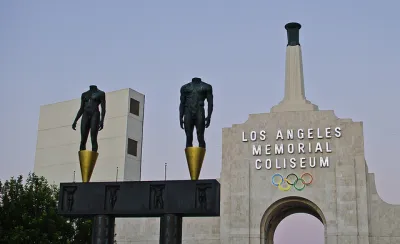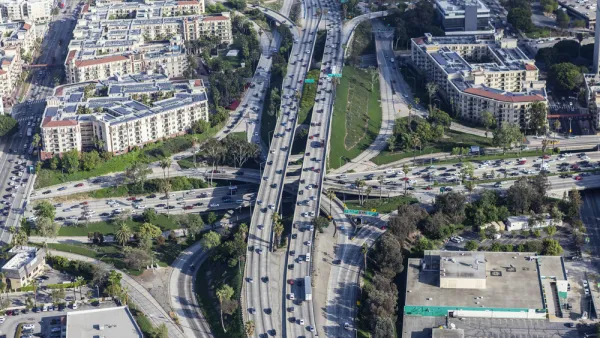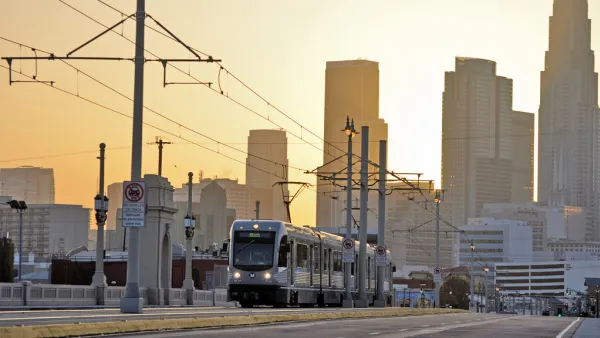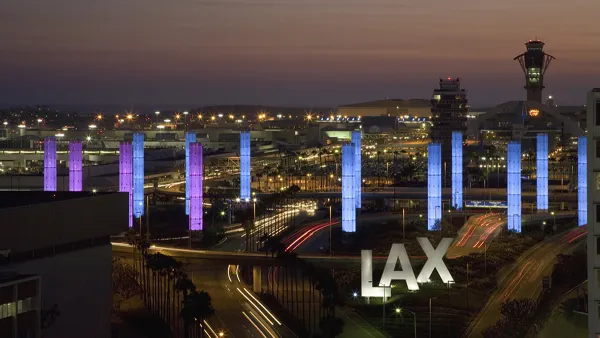Ahead of the 2028 Olympic Games, Los Angeles is rallying around infrastructure buildout and technological advancement.

Los Angeles could see an Olympic Games that is entirely connected by transit, organizers say. At the VerdeXchange 2018 Conference in Downtown L.A., AECOM sports leader Bill Hanway announced, "In our plan, each sports park is entirely accessible by public transport. No private cars will be used at all during the course of the Games."
That vision is driven in large part by LA Metro's plan to accelerate 28 projects for the Olympics, which CEO Phil Washington told the conference is the most ambitious transportation infrastructure initiative in the country. Metro is also in talks with Elon Musk about using his tunnel-boring technology to speed up projects, Washington said.
L.A. hopes that using the Olympics as a stimulus to strengthen existing infrastructure could drive important advancements for the region, unlike in other cities where hosting ended in empty husks and copious debt. Sharing lessons from past games, the panel noted that L.A.'s last go-around, in 1984, prompted the launch of the country's first program to synchronize traffic signals.
But since the city is now in the unusual position of preparing for the games 11 years ahead of time, it must allow for the near certainty that new technologies—especially transportation technologies—will push the limits of what current infrastructure plans can deliver or even imagine.
Justin Erbacci, chief innovation officer at LAX, told the panel that the airport is planning to have not only autonomous cars, but also flying cars (a.k.a. vertical take-off and landing vehicles) in service by the 2028 Olympics. That's on top of the modernization program the airport is already undertaking, which includes an automated people mover that will connect it to Metro rail for the first time.
Read the full discussion in The Planning Report, or watch it on video.
FULL STORY: LA's 2028 Olympics Already Catalyzing Transformative Infrastructure Investments

Analysis: Cybertruck Fatality Rate Far Exceeds That of Ford Pinto
The Tesla Cybertruck was recalled seven times last year.

National Parks Layoffs Will Cause Communities to Lose Billions
Thousands of essential park workers were laid off this week, just before the busy spring break season.

Retro-silient?: America’s First “Eco-burb,” The Woodlands Turns 50
A master-planned community north of Houston offers lessons on green infrastructure and resilient design, but falls short of its founder’s lofty affordability and walkability goals.

Test News Post 1
This is a summary

Analysis: Cybertruck Fatality Rate Far Exceeds That of Ford Pinto
The Tesla Cybertruck was recalled seven times last year.

Test News Headline 46
Test for the image on the front page.
Urban Design for Planners 1: Software Tools
This six-course series explores essential urban design concepts using open source software and equips planners with the tools they need to participate fully in the urban design process.
Planning for Universal Design
Learn the tools for implementing Universal Design in planning regulations.
EMC Planning Group, Inc.
Planetizen
Planetizen
Mpact (formerly Rail~Volution)
Great Falls Development Authority, Inc.
HUDs Office of Policy Development and Research
NYU Wagner Graduate School of Public Service




























